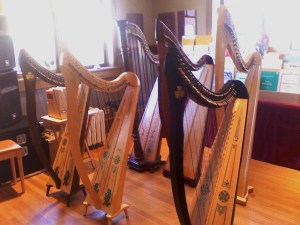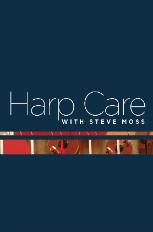If you play a Lyon & Healy or Salvi lever harp, you may have noticed that these manufacturers, through their sister company, Bow Brand Strings, produce both “Lever Gut” and “Pedal Gut” strings. You might think that if you own a lever harp, you will want to buy lever gut strings, but it ain’t necessarily so.
Both Lyon & Healy and Salvi produce two varieties of lever harp. Many of the best-known models, such as the Lyon & Healy Prelude, Troubadour, and Ogden, and the Salvi Ana, are designed as “starter pedal harps.” While they have no pedals, they are strung with pedal harp strings and mimic the tension, string spacing, and feel of a pedal harp.
Other models, such as the Lyon & Healy Lyric and the Salvi Egan, are designed with folk and Celtic harpers in mind. They are generally lighter in construction and easier to carry, and they feature a lower string tension for easier playing and a brighter sound.
The Lever Gut strings produced by Bow Brand (and available through harp.com, among others) are designed for use with these folk and Celtic harps.
If you’re unsure of what strings to order for your harp, contact Lyon & Healy West. They can advise you over the phone, and send you a chart that shows which strings to buy for each model of Lyon & Healy and Salvi lever harp. No matter what make of harp you play, it’s a great idea to contact the maker and request a stringing chart if you don’t already have one. It’ll make replacing strings that much easier when the time comes.



0 Comments